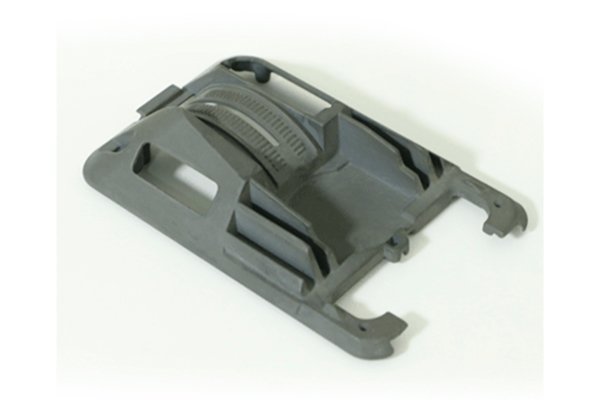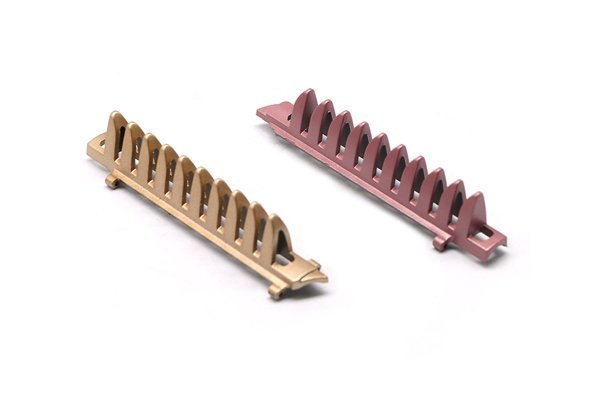Did you know that the global CNC machining market is projected to reach approximately $100 billion by 2025, with Asia-Pacific regions expected to dominate the market? Among these regions, China has established itself as a powerhouse for precision CNC machining, particularly for aluminum. This expansive growth is attributed to innovations in technology, demand for high-quality parts, and cost-effective manufacturing. But what exactly makes precision CNC machining for aluminum in China a go-to solution for countless industries? In this blog, we will delve deep into the benefits, applications, and techniques associated with precision CNC machining for aluminum, while also highlighting how businesses can leverage these advantages.
Understanding CNC Machining
What is CNC Machining?
Computer Numerical Control (CNC) machining refers to a manufacturing process where pre-programmed computer software dictates the movement of factory tools and machinery. This technology is extensively used to control a range of operations, including milling, turning, drilling, and other sophisticated processes. CNC machines can manufacture complex parts and components by removing material from a solid block of aluminum (or other materials) to create high-precision designs.
Why Choose Aluminum?
Aluminum has long been favored in the manufacturing industry due to its remarkable properties such as:
Key Benefits of Precision CNC Machining for Aluminum in China
CNC machining offers a level of precision that manual machining simply cannot match. Modern CNC machines can achieve tolerances of ±0.001 inches or better. This accuracy is crucial in industries like aerospace, automotive, and electronics, where even a slight deviation can lead to catastrophic failures or costly recalls.
Manufacturing in China allows companies to take advantage of lower labor and operational costs while maintaining high-quality output. CNC machining in China can provide significant savings on production costs without sacrificing quality. Bulk production often means reduced per-unit costs, which is beneficial for large-scale projects.
China is home to some of the world’s most advanced CNC machining technologies. With innovations such as multi-axis machining centers and high-speed machining, manufacturers can produce complex parts in a single set-up. This reduces production time and enhances the overall efficiency of the manufacturing process.
Precision CNC machining for aluminum is highly versatile, enabling its use in various industries, including:
CNC machining allows for high levels of customization, catering to specific customer requirements. Whether it’s small batch production or large-scale manufacturing, CNC machines can swiftly adapt to design changes without significant downtime.
Common Techniques in Precision CNC Machining for Aluminum
Milling is one of the most commonly employed CNC machining processes. It involves the use of rotating cutting tools to remove material from a workpiece. Innovations in milling technology have led to multi-axis machines that can create complex geometries, significantly expanding the capabilities of CNC milling for aluminum.
Turning is the process of performing operations on a cylindrical workpiece by rotating the material against a stationary cutting tool. CNC lathes enable the production of intricate parts such as shafts, sleeves, and spokes. CNC turning for aluminum components is beneficial for producing high-volume runs with high precision.
This innovative process uses electrical energy to remove material from a workpiece, which can be particularly advantageous when working with tough materials like aluminum. ECM allows for intricate designs and is capable of producing high tolerances in hard-to-reach areas within the component.
Laser technologies are often integrated into CNC machining processes. Laser cutting provides the ability to create precise cuts at high speeds, while laser engraving can offer detailed designs on aluminum surfaces, adding a professional touch to the final product.

As technology evolves, businesses are incorporating 3D printing into CNC machining processes, particularly for creating prototypes or small series production. This hybrid approach can often result in faster turnaround times and reduced waste.
The Process: From Concept to Production
The first step in CNC machining is the design phase. CAD (Computer-Aided Design) software allows engineers to create detailed 3D models of the component. This phase often includes prototyping, where digital models are turned into physical prototypes through CNC machining, allowing for testing and modifications.
Once the design is finalized, the next step is programming the CNC machines. G-code is commonly used to dictate the movements of the machine, and it can be generated either manually or through CAM (Computer-Aided Manufacturing) software.
Selecting the right aluminum grade is crucial for achieving the desired properties in the final component. Common grades include:
This is where the actual machining takes place. The aluminum block is fed into the CNC machine, and the programmed operations begin. Regular checks during this phase ensure the quality and adherence to specifications.
After machining, various finishing processes may be employed to enhance the surface quality of the final product. This could include anodizing, which increases corrosion resistance and surface hardness, or polishing for aesthetic purposes.
Rigorous quality control measures are taken to ensure that each component meets the specifications. Techniques include dimensional checks, surface finish assessments, and functional testing.
Once quality checks are complete, the product is ready for delivery. Gathering feedback from clients is crucial for continuous improvement and fostering long-term relationships.
Challenges in Precision CNC Machining for Aluminum
Despite its numerous benefits, precision CNC machining for aluminum does face challenges, including:
While aluminum is a versatile material, certain properties may limit its use. For example, it may not be suitable for extremely high-temperature applications.
Optimizing parameters such as cutting speed, feed rate, and tool type is critical. Poorly selected parameters can lead to issues such as tool wear and suboptimal surface finishes.
As the market for CNC machining rapidly evolves, companies must continuously innovate to maintain a competitive edge. Staying updated with technological advancements is crucial for long-term success.
Sourcing high-quality aluminum and maintaining an efficient supply chain can pose challenges, especially in times of global instability.
In conclusion, precision CNC machining for aluminum in China offers a multitude of advantages that make it an attractive option for various industries. From high precision and cost-effectiveness to advanced technologies and diverse applications, businesses can significantly benefit from adopting these practices. Understanding the essential techniques involved—from milling and turning to quality control and post-processing—is crucial for any business aiming to leverage CNC machining effectively.
As we continue to see growth in the CNC machining market, the importance of leveraging precision machining practices cannot be overstated. It’s about staying competitive, innovating continuously, and meeting the demands of an evolving marketplace. By embracing precision CNC machining for aluminum in China, businesses not only ensure high-quality outputs but also position themselves favorably for future growth.
The insights and techniques discussed in this blog are significant for entrepreneurs, manufacturers, and engineers alike. As the sophistication of CNC technology evolves, it will undoubtedly continue to transform the manufacturing landscape, making it essential for stakeholders to stay informed and strategic in their approach. We hope this blog has provided you with valuable insights into why precision CNC machining for aluminum in China is worth considering—an opportunity to elevate your manufacturing capabilities for years to come.






